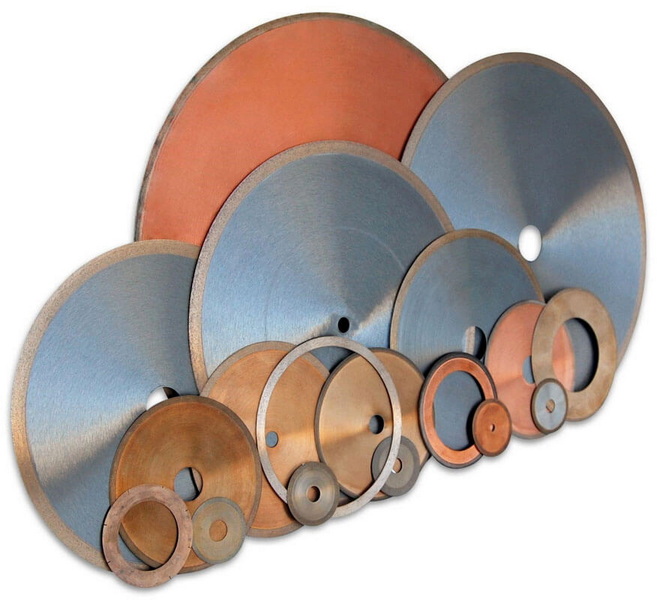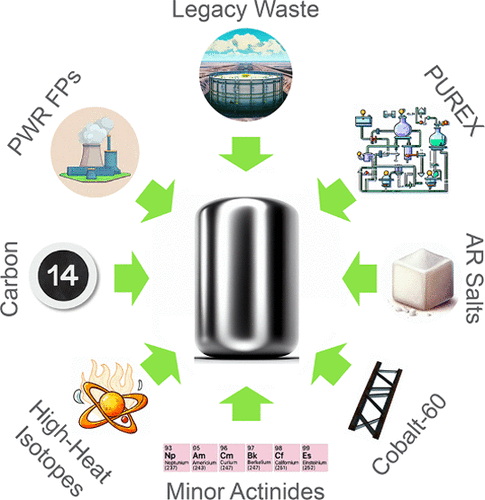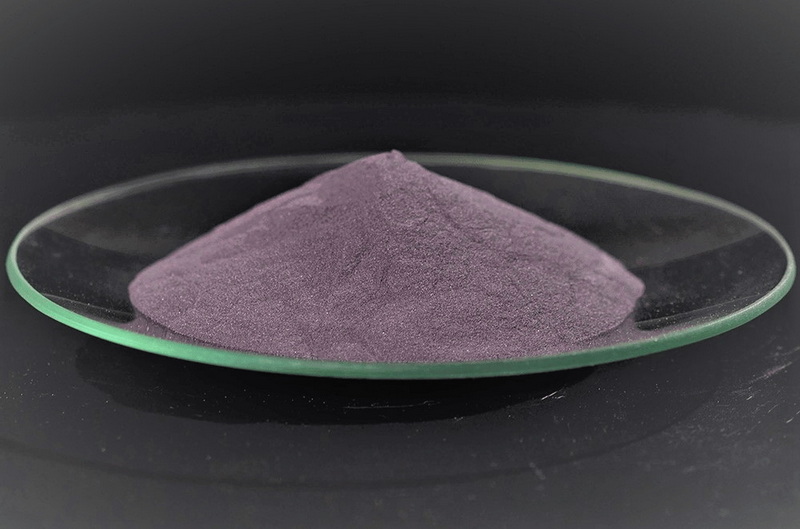Content Menu
● Understanding Cemented Carbide with Cobalt-Nickel Binder
>> Composition and Properties
● Historical Development and Evolution of Cemented Carbide Materials
● Comparison of Cobalt-Nickel Binder with Other Binders Used in Cemented Carbide
● Why Is an SDS Required for Cemented Carbide with Cobalt-Nickel Binder?
>> 1. Health and Safety Concerns
>> 2. Fire and Explosion Hazards
>> 3. Regulatory Compliance
● Key Sections of an SDS for Cemented Carbide with Cobalt-Nickel Binder
● Safety Precautions When Handling Cemented Carbide Products with Cobalt-Nickel Binder
>> Personal Protective Equipment (PPE)
>> Engineering Controls
>> Safe Work Practices
>> Emergency Measures
● Applications and Case Studies of Cemented Carbide Products in Various Industries
>> Industrial Applications
>> Military Applications
>> Metallurgical Applications
>> Petroleum Drilling
● Innovations and Advancements in Cemented Carbide Technology
● Environmental Impact and Sustainability Practices in the Production of Cemented Carbide
>> Sustainability Initiatives
● Conclusion
● FAQ
>> 1. What is a cemented carbide product with cobalt-nickel binder SDS?
>> 2. Are cemented carbide products with cobalt-nickel binders hazardous in their finished form?
>> 3. Why is cobalt considered a health risk in cemented carbide products?
>> 4. How can exposure to hazardous dust from cemented carbide be minimized?
>> 5. Can cemented carbide scrap be recycled safely?
● Citations:
Cemented carbide products with cobalt-nickel binders are essential materials widely used in industrial, military, metallurgical, petroleum drilling, mining tools, and construction applications. These high-performance materials combine the hardness of carbides with the toughness of metallic binders, making them indispensable in demanding environments. However, despite their robust nature, these products require a Safety Data Sheet (SDS) to ensure safe handling, processing, and regulatory compliance. This article explores why an SDS is necessary for cemented carbide products with cobalt-nickel binders, detailing their composition, hazards, safety measures, and regulatory requirements.

Understanding Cemented Carbide with Cobalt-Nickel Binder
Cemented carbides are composite materials made by sintering hard carbide particles (primarily tungsten carbide, WC) bonded with a metallic binder such as cobalt (Co) and nickel (Ni). The cobalt-nickel binder provides toughness and ductility, while the carbide particles offer exceptional hardness and wear resistance.
Composition and Properties
- Tungsten Carbide (WC): The primary hard phase, providing extreme hardness and wear resistance.
- Cobalt and Nickel Binder: Metallic phases that bind the carbide grains, enhancing toughness and impact resistance.
- Additional Elements: Chromium (Cr), titanium carbide (TiC), tantalum carbide (TaC), and niobium carbide (NbC) may be added to improve corrosion resistance, thermal stability, and mechanical properties.
These materials are manufactured through powder metallurgy, involving mixing, pressing, and sintering at high temperatures to form a dense, hard, and durable product suitable for cutting tools, mining bits, wear parts, and more.
Historical Development and Evolution of Cemented Carbide Materials
The development of cemented carbide materials dates back to the early 20th century, with the first commercial products appearing in the 1920s and 1930s. Initially, tungsten carbide was bonded with cobalt due to cobalt's excellent wetting properties and toughness. Over time, research led to the introduction of nickel as a co-binder with cobalt to improve corrosion resistance and mechanical properties.
The evolution of cemented carbide technology has been driven by the need for materials that can withstand increasingly harsh environments and higher mechanical stresses. The addition of nickel to cobalt binders has allowed manufacturers to tailor the toughness, ductility, and corrosion resistance of cemented carbides, expanding their applications in industries such as aerospace, military, and oil drilling.
Comparison of Cobalt-Nickel Binder with Other Binders Used in Cemented Carbide
While cobalt remains the most common binder in cemented carbides, nickel is often added or used as an alternative binder. Here is a comparison of cobalt-nickel binders with other common binders:
| Binder Type | Advantages | Disadvantages |
| Cobalt (Co) | Excellent toughness, good wetting of carbides, high strength | Prone to corrosion, higher cost |
| Nickel (Ni) | Improved corrosion resistance, good toughness, lower cost than cobalt | Slightly lower hardness, less wetting ability |
| Iron (Fe) | Low cost, good magnetic properties | Lower toughness, less corrosion resistance |
| Cobalt-Nickel (Co-Ni) | Balanced toughness and corrosion resistance, improved mechanical properties | More complex processing, cost considerations |
The cobalt-nickel binder system offers a unique balance of mechanical strength, toughness, and corrosion resistance, making it ideal for applications where both durability and environmental resistance are critical.
Why Is an SDS Required for Cemented Carbide with Cobalt-Nickel Binder?
1. Health and Safety Concerns
While the finished cemented carbide products are generally stable and non-hazardous under normal use, certain operations such as grinding, cutting, or machining can generate dust, fumes, or vapors containing cobalt, nickel, and other potentially hazardous substances.
- Inhalation Risks: Dust generated during machining can be inhaled, causing respiratory irritation or more severe pulmonary conditions. Cobalt and nickel dusts are known to cause allergic reactions and respiratory sensitization.
- Skin and Eye Contact: Dust or powder can cause irritation or allergic skin reactions and eye irritation.
- Ingestion: Although unlikely, ingestion of dust can cause systemic toxicity affecting organs such as the heart, lungs, kidneys, and bladder.
Cobalt is classified as a suspected human carcinogen by IARC (Group 2B), and nickel is also considered a potential carcinogen. Therefore, exposure to dust and fumes must be controlled.
2. Fire and Explosion Hazards
The solid cemented carbide products themselves are not flammable. However, dust generated during grinding or other mechanical processing can pose a fire or explosion hazard if allowed to accumulate and exposed to ignition sources.
- Dust particles suspended in air can ignite or explode under certain conditions.
- Proper ventilation and dust control measures are necessary to prevent hazardous accumulations.
3. Regulatory Compliance
An SDS is a regulatory requirement under OSHA's Hazard Communication Standard (29 CFR 1910.1200) and similar regulations worldwide. It provides essential information for:
- Safe handling and storage
- Emergency measures in case of exposure or accidents
- Proper disposal methods
- Transportation guidelines
Manufacturers and suppliers must provide an SDS to inform users of potential hazards and safety precautions.

Key Sections of an SDS for Cemented Carbide with Cobalt-Nickel Binder
An SDS typically includes the following critical information:
| Section | Content Description |
| Identification | Product name, manufacturer details, emergency contact |
| Hazard Identification | Classification of hazards, warning symbols, risk statements |
| Composition/Information on Ingredients | Chemical components and their concentrations |
| First Aid Measures | Instructions for exposure via inhalation, skin, eyes, ingestion |
| Firefighting Measures | Flammability, suitable extinguishing media, special procedures |
| Accidental Release Measures | Spill cleanup and containment procedures |
| Handling and Storage | Safe handling practices, storage conditions |
| Exposure Controls/Personal Protection | Exposure limits, PPE recommendations |
| Physical and Chemical Properties | Appearance, melting point, solubility, etc. |
| Stability and Reactivity | Chemical stability and incompatible materials |
| Toxicological Information | Health effects, carcinogenicity, chronic exposure risks |
| Ecological Information | Environmental impact and disposal considerations |
| Transport Information | Shipping classifications and regulations |
| Regulatory Information | Compliance with local and international laws |
| Other Information | Revision dates, references, disclaimers |
This comprehensive data ensures that all stakeholders—from manufacturers to end-users—understand the risks and necessary precautions.
Safety Precautions When Handling Cemented Carbide Products with Cobalt-Nickel Binder
Personal Protective Equipment (PPE)
- Use respiratory protection when grinding or machining to avoid inhaling dust.
- Wear gloves and protective clothing to prevent skin contact.
- Use safety goggles or face shields to protect eyes from dust and particles.
Engineering Controls
- Employ local exhaust ventilation to capture dust at the source.
- Use dust collection systems and maintain clean work areas to prevent dust accumulation.
Safe Work Practices
- Avoid dry sweeping; use wet methods or vacuum systems for cleaning.
- Store materials in closed containers to minimize dust release.
- Train workers on hazards and proper handling procedures.
Emergency Measures
- In case of inhalation, move the affected person to fresh air and seek medical attention if symptoms persist.
- For skin or eye contact, rinse thoroughly with water and seek medical advice if irritation continues.
- If ingestion occurs, seek immediate medical attention.
Applications and Case Studies of Cemented Carbide Products in Various Industries
Cemented carbide products with cobalt-nickel binders are used extensively across multiple sectors due to their superior mechanical properties.
Industrial Applications
- Cutting Tools: Used in metal cutting, woodworking, and machining tools for their wear resistance and toughness.
- Mining and Drilling: Drill bits and mining tools benefit from the hardness and impact resistance of cemented carbides.
- Wear Parts: Components such as nozzles, valve seats, and dies that require high abrasion resistance.
Military Applications
- Armor-piercing projectiles and other military-grade components utilize cemented carbides for their hardness and durability.
Metallurgical Applications
- Tools and dies used in metal forming and extrusion processes rely on cemented carbides for long service life.
Petroleum Drilling
- Drill bits and wear-resistant parts in oil and gas exploration use cobalt-nickel binder cemented carbides to withstand harsh downhole conditions.
Case Study: A leading mining company replaced traditional steel drill bits with cemented carbide bits containing cobalt-nickel binders, resulting in a 40% increase in drilling efficiency and a significant reduction in tool replacement costs.
Innovations and Advancements in Cemented Carbide Technology
Recent advancements have focused on improving the performance and sustainability of cemented carbide products:
- Nanostructured Carbides: Refining grain size to the nanoscale enhances hardness and toughness.
- Advanced Binders: Optimizing cobalt-nickel ratios and adding other elements to improve corrosion resistance and mechanical properties.
- Additive Manufacturing: Exploring 3D printing techniques for complex carbide components.
- Surface Coatings: Applying wear-resistant coatings to extend tool life.
These innovations contribute to safer, more efficient, and environmentally friendly cemented carbide products.
Environmental Impact and Sustainability Practices in the Production of Cemented Carbide
The production of cemented carbide products involves mining and processing of raw materials such as tungsten, cobalt, and nickel, which have environmental and ethical considerations.
- Resource Extraction: Mining of cobalt and nickel can have significant environmental and social impacts.
- Energy Consumption: High-temperature sintering processes consume substantial energy.
- Waste Management: Proper handling of waste powders and scrap is essential to prevent environmental contamination.
Sustainability Initiatives
- Recycling: Scrap carbide is recycled to recover valuable metals, reducing the need for virgin materials.
- Green Manufacturing: Efforts to reduce energy consumption and emissions during production.
- Ethical Sourcing: Ensuring cobalt and nickel are sourced responsibly to avoid conflict minerals.
Manufacturers are increasingly adopting these practices to minimize environmental footprints and comply with global sustainability standards.
Conclusion
An SDS is essential for cemented carbide products with cobalt-nickel binders due to the potential health hazards associated with dust and fumes generated during processing, the fire and explosion risks of dust accumulation, and regulatory requirements for safe handling and environmental protection. While the finished products are stable and safe under normal use, the machining and grinding processes can expose workers to cobalt and nickel dusts, which are potentially carcinogenic and harmful to respiratory and skin health. The SDS provides critical information to ensure safe use, emergency response, and compliance with safety regulations, protecting workers, the environment, and businesses alike.
Advancements in cemented carbide technology and sustainability practices continue to improve the safety, performance, and environmental impact of these vital materials. Understanding the risks and adhering to SDS guidelines is crucial for all stakeholders involved in the production, handling, and use of cemented carbide products with cobalt-nickel binders.

FAQ
1. What is a cemented carbide product with cobalt-nickel binder SDS?
An SDS for cemented carbide with cobalt-nickel binder is a document that provides detailed safety, health, and handling information about the product, especially concerning dust and fumes generated during processing.
2. Are cemented carbide products with cobalt-nickel binders hazardous in their finished form?
No, the finished products are generally stable and non-hazardous. Hazards arise mainly during grinding, cutting, or machining when dust and fumes are generated.
3. Why is cobalt considered a health risk in cemented carbide products?
Cobalt dust is a suspected human carcinogen and can cause respiratory sensitization, skin allergies, and systemic toxicity if inhaled or ingested in significant amounts.
4. How can exposure to hazardous dust from cemented carbide be minimized?
Exposure can be minimized by using proper ventilation, dust collection systems, personal protective equipment, and safe work practices such as wet methods for cleaning.
5. Can cemented carbide scrap be recycled safely?
Yes, cemented carbide scrap can be recycled or reclaimed, but disposal must comply with environmental regulations to prevent dust release and contamination.
Citations:
[1] https://www.vistametalsinc.com/sds.pdf
[2] https://www1.mscdirect.com/MSDS/MSDS00015/09906199-20171109.PDF
[3] https://www.carbide-products.com/blog/cemented-carbide-product-with-cobalt-binder/
[4] https://carbideprocessors.com/pages/carbide-parts/cobalt-as-a-carbide-binder.html
[5] https://www1.mscdirect.com/MSDS/MSDS00023/76115203-20151114.PDF
[6] http://www.carbidetechnologies.com/wp-content/uploads/2018/12/SDS-CARBIDETECHNOLOGIES.pdf
[7] https://www.basiccarbide.com/assets/pdfs/basic-carbide-safety-data-sheet.pdf
[8] https://media.napaonline.com/is/content/GenuinePartsCompany/863925pdf
[9] https://www.everloy-cemented-carbide.com/en/faq/1722/
[10] https://www1.mscdirect.com/MSDS/MSDS00023/76115203-20151114.PDF
[11] https://www.generalcarbide.com/wp-content/uploads/2019/04/GeneralCarbide-MSDS.pdf
[12] https://www.ultra-met.com/wp-content/uploads/Safety_Data_Sheet_Carbide_Products_2015_v3.pdf
[13] https://webshop.iscar.de/downloads/action/show_file/product/1949183/file_type/MSDS
[14] https://www1.mscdirect.com/MSDS/MSDS00029/68789197-20100903.PDF
[15] https://pennunited.com/sites/default/files/SDS%20PUC%20Tungsten%20Carbide.pdf
[16] https://www.hannibalcarbide.com/technical-support/msds/
[17] https://zoncohn.en.made-in-china.com/product/RfDrNBeJgnhC/China-Cobalt-Nickel-Binder-Tungsten-Carbide-Custom-Mwd-Parts-with-OEM.html
[18] https://zoncohn.en.made-in-china.com/product/utbpqwYEYxVj/China-Cobalt-Nickel-Binder-OEM-Abrasion-Resistant-Mwd-Carbide-Parts.html
[19] https://shop.gfii.com/images/GFI%20SDS%2002%20-%20Carbide%20Product%20-%20March%202025.pdf
[20] https://www.sciencedirect.com/science/article/pii/S026343681830533X
[21] https://www.ndcarbide.com/china-wholesale-tungsten-carbide-cobalt-binder-seal-ring-manufacturers-tungsten-carbide-thrust-washer-for-pumps-nd-2-product/
[22] https://www.sciencedirect.com/science/article/abs/pii/S026343681100117X
[23] https://www.hmhmetal.in/tungsten-carbide-products.html
[24] https://www.mdpi.com/2075-4701/12/11/1914
[25] https://www.ceratizit.com/int/en/sustainability/blog/2021/blogposting-cemented-carbide.html
[26] https://www.everloy-cemented-carbide.com/en/faq/1718/
[27] https://www.practicalmachinist.com/forum/threads/carbide-with-nickel-cement.348398/
[28] https://www1.mscdirect.com/MSDS/MSDS00015/09906199-20171109.PDF
[29] http://www.carbidetechnologies.com/msds/
[30] https://www.eng-tips.com/threads/need-a-definition-for-cemented-carbides.106359/
[31] https://www1.mscdirect.com/MSDS/MSDS00053/59416511-20180606.PDF
[32] https://media.napaonline.com/is/content/GenuinePartsCompany/863925pdf
[33] https://www.techmet-carbide.com/customer/Content%20Pages/Resources%20Page/SDS.pdf
[34] https://www.westernsupplies.com/admin/msds_pdfs/Cemented%20Carbide%20Grades%20(Cemented%20Tungsten%20Carbide%20wcobalt%20filler)_tv0egn3l.pdf
[35] https://www.icscuttingtools.com/pdfs/SDS-2-Carbide.pdf
[36] https://shop.gfii.com/images/GFI%20SDS%2002%20-%20Carbide%20Product%20-%20December%202019.pdf
[37] https://www.dymetalloys.co.uk
[38] https://ceramics.org/ceramic-tech-today/researchers-investigate-feasibility-of-nanoceramics-as-binder-in-cemented-carbide-tools/
[39] https://www.diva-portal.org/smash/get/diva2:1356595/FULLTEXT01.pdf
[40] https://www.bangerter.com/en/tungsten-carbide
[41] https://www.kennametal.com/us/en/products/carbide-wear-parts/fluid-handling-and-flow-control/separation-solutions-for-centrifuge-machines/tungsten-carbide-materials.html
[42] https://us.ns-tool.com/en/download/pdf/SDS-WC-JA20171_en.pdf
[43] http://www.wococarbide.com/Uploads/2016-12-05/5844f9738447e.pdf
















